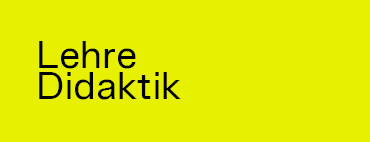Welcome at the Interface Culture program website.
Acting as creative artists and researchers, students learn how to advance the state of the art of current interface technologies and applications. Through interdisciplinary research and team work, they also develop new aspects of interface design including its cultural and social applications. The themes elaborated under the Master's programme in relation to interactive technologies include Interactive Environments, Interactive Art, Ubiquitous Computing, game design, VR and MR environments, Sound Art, Media Art, Web-Art, Software Art, HCI research and interaction design.

The Interface Culture program at the Linz University of Arts Department of Media was founded in 2004 by Christa Sommerer and Laurent Mignonneau. The program teaches students of human-machine interaction to develop innovative interfaces that harness new interface technologies at the confluence of art, research, application and design, and to investigate the cultural and social possibilities of implementing them.
The term "interface" is omnipresent nowadays. Basically, it describes an intersection or linkage between different computer systems that makes use of hardware components and software programs to enable the exchange and transmission of digital information via communications protocols.
However, an interface also describes the hook-up between human and machine, whereby the human qua user undertakes interaction as a means of operating and influencing the software and hardware components of a digital system. An interface thus enables human beings to communicate with digital technologies as well as to generate, receive and exchange data. Examples of interfaces in very widespread use are the mouse-keyboard interface and graphical user interfaces (i.e. desktop metaphors). In recent years, though, we have witnessed rapid developments in the direction of more intuitive and more seamless interface designs; the fields of research that have emerged include ubiquitous computing, intelligent environments, tangible user interfaces, auditory interfaces, VR-based and MR-based interaction, multi-modal interaction (camera-based interaction, voice-driven interaction, gesture-based interaction), robotic interfaces, natural interfaces and artistic and metaphoric interfaces.
Artists in the field of interactive art have been conducting research on human-machine interaction for a number of years now. By means of artistic, intuitive, conceptual, social and critical forms of interaction design, they have shown how digital processes can become essential elements of the artistic process.
Ars Electronica and in particular the Prix Ars Electronica's Interactive Art category launched in 1991 has had a powerful impact on this dialog and played an active role in promoting ongoing development in this field of research.
The Interface Cultures program is based upon this know-how. It is an artistic-scientific course of study to give budding media artists and media theoreticians solid training in creative and innovative interface design. Artistic design in these areas includes interactive art, netart, software art, robotic art, soundart, noiseart, games & storytelling and mobile art, as well as new hybrid fields like genetic art, bioart, spaceart and nanoart.
It is precisely this combination of technical know-how, interdisciplinary research and a creative artistic-scientific approach to a task that makes it possible to develop new, creative interfaces that engender progressive and innovative artistic-creative applications for media art, media design, media research and communication.
Mit der Kraft der Improvisation die Selbstwirksamkeit von Studierenden stärken
Inhalt
Improvisationsmethoden sind sehr vielfältig, lassen sich leicht adaptieren und tragen dazu bei, dass Studierende ihre Entwicklung in Hinblick auf die Lernziele aktiv und selbstbestimmt mitgestalten können. Zum Einsatz kommen assoziative Herangehensweisen mit dem Körper, der Stimme, Texten, Bildern oder improvisierten Kurzszenen. Diese Methoden lassen sich in jeder Lehrveranstaltung gut integrieren und fördern insgesamt den Lernprozess, auch wenn es um hochkomplexe Themen aus Feldern wie Technik oder Coding geht. Außerdem wird die Wahrnehmung und Weiterentwicklung wesentlicher Schlüsselkompetenzen gefördert. Die Methoden sind besonders geeignet im Kontext transformativer Bildung, die sich mit den Krisen unserer Zeit in den Bereichen Klima, Biodiversität und sozioökonomischen Herausforderungen beschäftigt.
Darüber hinaus eignen sich Improvisationsmethoden hervorragend, um Fähigkeiten im Bereich Forschung weiterzuentwickeln. Sie können auch genutzt werden, um entsprechende Projekte zu entwickeln oder als innovative Formen partizipativer Aktionsforschung zum Einsatz zu kommen.
Lernziele
Nach dem Workshop sind Teilnehmende in der Lage:
- Improvisationsmethoden auszuwählen, zu adaptieren, in didaktische Konzepte zu integrieren sowie ihre Nutzung und Auswirkungen zu reflektieren
- Rahmenbedingungen für den Einsatz von Improvisationsmethoden mit theoretischen Grundlagen und praktischen Herangehensweisen transformativer Bildung in Einklang zu bringen
- Improvisationsmethoden auch außerhalb von Lehrveranstaltungen zum Einsatz zu bringen etwa beim Finden und Konkretisieren von Ideen, in Projekten, in der Forschung und Weiterentwicklung hochschuldidaktischer Kompetenzen
Methoden
Ausgehend von Vorbereitungsmaterialien und dazu passenden Aufgabenstellungen setzen wir im Workshop verschiedene Improvisationsmethoden um und reflektieren deren Einsatzoptionen. Dazu kommen weiterführende Impulse und gemeinsames Arbeiten zu
Begleitung
Dr. Christian F. Freisleben kann auf eine über 35-jährige Erfahrung als Begleiter und Ermöglicher transformativer Bildungsprozesse, als Berater, Referent und Improvisateur u. a. an verschiedenen Hochschulen im deutschen Sprachraum zurückgreifen sowie auf eigene Lehrerfahrungen in verschiedensten didaktischen Settings. 2020 hat er eine Dissertation zu Improvisationsmethoden in tertiären Bereich abgeschlossen.
Termin
12.6.2025, 9-13 Uhr
Ort
Sitzungszimmer H6.0202; Hauptplatz 6, 2. Stock
Zielgruppe
Künstlerisch-Wissenschaftliches Personal der Kunstuniversität Linz
Anmeldung unter: https://forms.office.com/e/Yi70jv2Xwn
